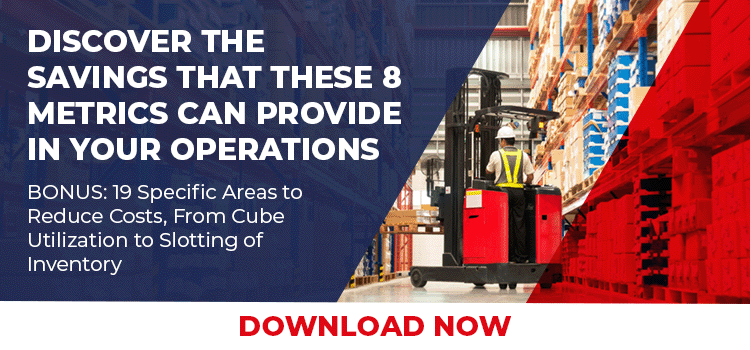 Few companies have documented the true cost of shipping errors, though everyone knows the impacts on customers is painful, often causing customers to never purchase again. As warehouse consultants, we often assist clients with ways to reduce shipping errors in their operations, and in developing the true cost of shipping errors.
Few companies have documented the true cost of shipping errors, though everyone knows the impacts on customers is painful, often causing customers to never purchase again. As warehouse consultants, we often assist clients with ways to reduce shipping errors in their operations, and in developing the true cost of shipping errors.
From our studies, the cost of a fulfillment or shipping error to your business is between $38.50 and $58.50, without customer service costs. These numbers can vary depending on your average parcel shipping costs. But the most severe error not factored into this number is an error that causes you to lose a customer and their lifetime value. Previously, we have discussed how to calculate cost of shipping errors, in this article we will focus on identifying the major causes of errors and practices which will reduce shipping errors.
Reduce Shipping Errors by Analyzing the Operations
Based on our operational and warehouse assessments, here are eight major sources of shipping errors, and how to reduce or eliminate them altogether:
1. Shipping Errors from Various Order Sources
Different order sources can create problems if the integrations aren’t clean, or mostly automated. While these errors are not controlled by fulfillment, they contribute to the error rate. In smaller companies, there may be orders that come in from outside sources, sales reps or sites that may not be directly integrated to the OMS or ERP solution.
These typically rely on manual edits, and in some companies, the re-keying of orders. Obviously, this opens the possibility for errors. To combat keying errors, it is imperative to integrate this data as much as possible.
2. Product Receiving
For many companies, inventory accuracy issues lead to shipping errors, such as the wrong item being picked and shipped to the customer. It is not uncommon for certain inventory accuracy problems to begin in receiving.
The most common problems occur when the wrong item is received, and putaway into stock and subsequently picked. Additionally, you may accept damaged product inadvertently, all these may not be discovered until later in the process, creating errors.
To mitigate these errors, it is important to have a strong team in receiving team that is diligent in identifying SKUs, identifying incorrect SKUs and looking for damages. These damages aren’t just externally visible damages, but also those caught during a disciplined inspection process.
Most companies use the vendor’s history of errors as the basis for doing inspection. The highest quality vendors do not justify detailed inspection beyond each/case counts. Sloppy vendors generally are sampled 5% to 10%. If the situation warrants, then all quantities are inspected. Exclusives and proprietary product require having as much as 100% inspection to meet specifications.
3. Product Replenishments and Stock Transfers
Replenishing pick bins is certainly an opportunity for inventory to be placed in the wrong locations, and to create errors. Without barcode scanning, workers must be diligent in confirming they have the right product and are placing it in the right location. The same is true when transferring product from one location to another.
4. Picking and Product Slotting
How product is slotted in the pick locations can have a significant impact on shipping errors. For items like apparel, or those that are multi-dimensional, companies tend to slot the same sizes for a color together. When picking orders, it is not uncommon for a picker to inadvertently pick the wrong size. Additionally, workers don’t always put product back in the correct slot.
To reduce picking errors, a good warehouse management system benefits the operations tremendously, especially with barcode scanning capabilities. With barcoding, companies should consider not slotting products of the same (or similar) colors and sizes together. This reduces the risks associated with picking the wrong item. Also track the errors by picker, you may find training opportunities, or identify individuals that are not suited for picking.
5. Product Marking and Labeling
For larger businesses, the SKU assortments have grown to tens of thousands of products. Tribal knowledge of knowing what specific products look like and where they are stored no longer works. Companies must ensure that all products and cartons are properly marked and labeled with the barcode or UPC codes, along with the item numbers and descriptions. This allows product confirmation in the replenishment, picking and packing process.
6. Stock Location Labeling
All product storage, both bulk reserve and picking locations, and floor staged locations should be labeled with barcodes. If no barcoding is utilized, the labels must be designed so that the human readable characters are easy to read and understand.
To reduce shipping errors, ensure that all locations are properly labeled, utilizing industry best practices with your stock locations – with the location being made up of the zone, aisle, bay, level and position on the label.
7. Multiple SKUs in a Bin Location
To save space, we often see companies putting multiple SKUs in the same stock location. Not only will this create the potential for mis-picks, but also slows down the picking process. Best practice is to have a single SKU in a pick bin to reduce shipping errors.
8. Technology and Automation
As we have illustrated, technology is critical to squeezing out errors. Implement barcode labeling and scanning in receiving; stock location; put away, pick, pack confirmation processes. Additionally, look at how voice technology, or pick to light, can be used to reduce shipping errors.
Summary
Staying on top of the operations and focusing on ways to reduce shipping errors involves the operations and customer service reporting. The cost to correct shipping errors, and the loss of customers, must be analyzed and reported to understand what corrective actions should be taken. This type of analysis should be a part of your next warehouse assessment. Learn how a warehouse consultant can assist you with improving your operations and warehouse efficiency.






SHARE